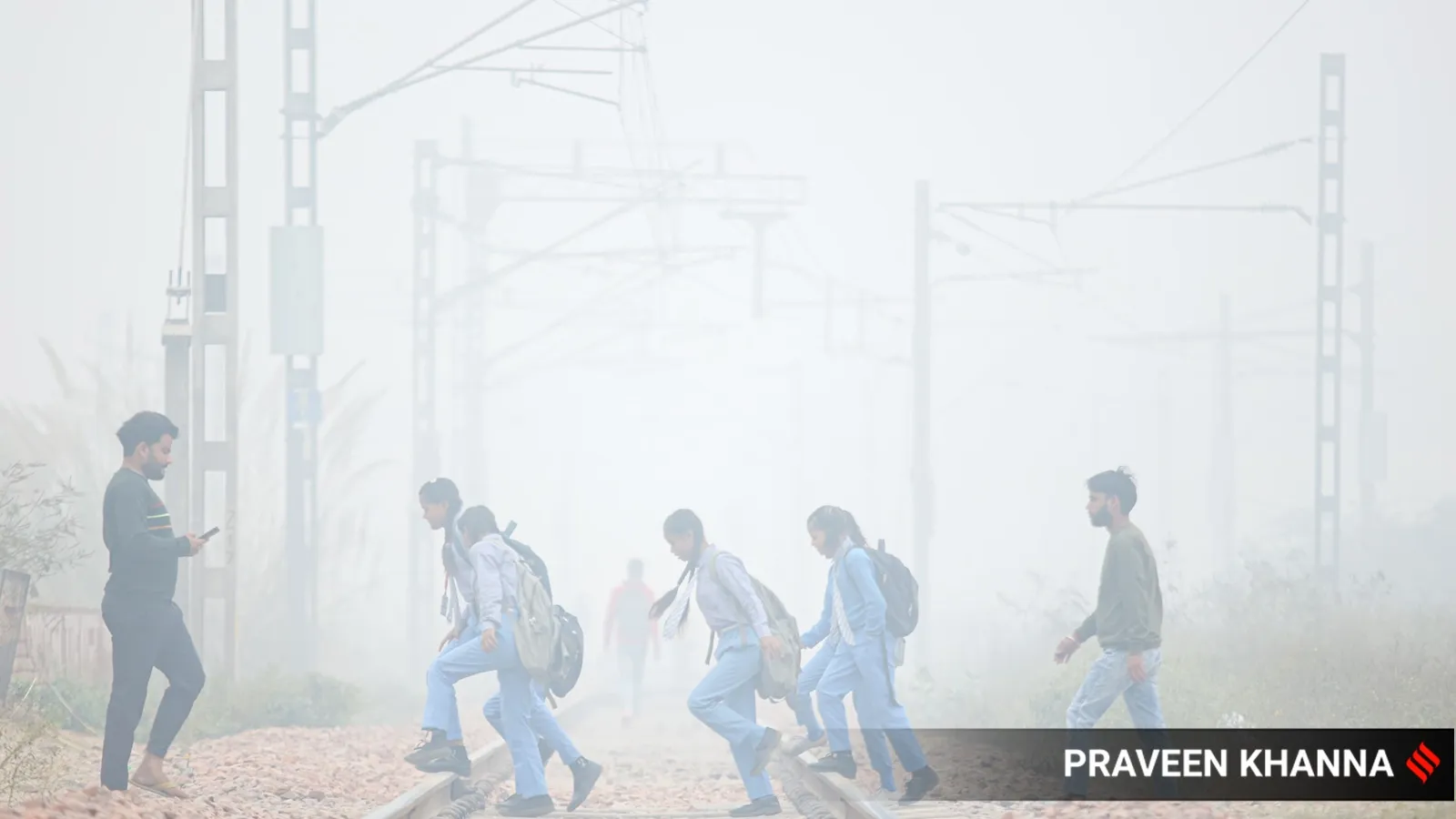 |
|
Delhi is grappling with a severe air pollution crisis, with the air quality index (AQI) reaching alarming levels. On Monday morning, the average AQI across the city soared to 487, a reading that signifies 'severe plus' conditions and represents one of the worst pollution episodes in November in recent years. This alarming figure signifies a significant threat to public health, with potentially severe consequences for vulnerable populations, including children, the elderly, and those with pre-existing respiratory conditions. The severity of the situation is further underscored by the fact that some areas within Delhi even registered an AQI of 500, the highest possible reading on the scale. The high levels of PM2.5 and PM10 pollutants are the primary drivers behind this drastic deterioration in air quality. These tiny particulate matters penetrate deep into the lungs, causing respiratory illnesses, cardiovascular problems, and other adverse health effects. The concentration of PM2.5, a particularly hazardous pollutant, was measured at 354 micrograms per cubic meter – more than twenty times the World Health Organization's (WHO) recommended limit. This is a stark illustration of the severe health risks faced by Delhi residents. The elevated levels of PM10, another harmful pollutant, were also significantly above WHO guidelines. This alarming situation necessitates immediate and comprehensive measures to mitigate the impact of this crisis.
The escalation in pollution levels is a multifaceted problem resulting from a confluence of factors. Experts point to a combination of stagnant meteorological conditions and a surge in emissions from various sources. The contribution of stubble burning in neighboring states, a recurring issue during this time of year, appears to be a significant factor. The lack of robust and systematic actions to address perennial pollution sources also plays a crucial role. In essence, the current crisis is a result of inadequate long-term strategies coupled with the temporary intensification of seasonal pollution factors. Data from the Central Pollution Control Board (CPCB) revealed a sharp increase in PM2.5 and PM10 levels since Sunday noon. This alarming trend highlights the rapid deterioration in air quality within a short period. A comparison with data from previous years reveals a disturbing pattern. The average PM2.5 levels from November 11 to 17 have been consistently high in recent years, with 2020 showing an average of 297 micrograms per cubic meter. While the numbers have fluctuated in subsequent years, the current levels are exceptionally high, exceeding those recorded in the same period in previous years, except for a brief period in 2022.
In response to this emergency, the Delhi government has activated Stage 4 of the Graded Response Action Plan (GRAP), imposing stringent measures to curb pollution. These measures include a complete ban on construction and demolition activities, with certain exemptions for crucial infrastructure projects. The entry of diesel-powered medium and heavy vehicles (BS-IV and below) into Delhi has also been restricted, with exceptions for essential services. To protect the health of students, schools have been instructed to switch to online classes, with some exceptions for classes 10 and 12. These measures aim to curtail emissions from various sources, thereby reducing the overall pollution burden. However, the effectiveness of these temporary measures remains to be seen. The long-term solution lies in a multi-pronged strategy to address the root causes of Delhi's perennial pollution problem. This requires a concerted effort to tackle stubble burning, improve public transportation, enhance industrial emission control measures, and promote cleaner energy sources. The Indian Meteorological Department (IMD) has issued a yellow alert, forecasting moderate or shallow fog or smog conditions in the coming days, further suggesting an unfavorable atmospheric environment that will hamper pollution dispersal.
The meteorological conditions play a crucial role in the persistence of this air pollution crisis. Low wind speeds and the formation of smog, as indicated by the IMD's yellow alert, inhibit the dispersion of pollutants. The low visibility conditions reported at Delhi's airports underscore the severity of the smog. The combination of low wind speeds and temperature inversions trap pollutants close to the ground, resulting in a build-up of pollutants in the atmosphere. This creates a stagnant environment that intensifies the health risks associated with the high AQI. Addressing the air pollution crisis requires a holistic approach, involving coordinated efforts at both local and regional levels. This includes stricter enforcement of pollution control norms, investment in sustainable transportation systems, promotion of cleaner fuel alternatives, and a concerted effort to reduce emissions from various sources. The current situation demands a comprehensive and long-term strategy, incorporating technological advancements and policy changes to ensure sustained improvement in Delhi’s air quality. The public's role in this collective effort is also paramount; through adopting sustainable practices, raising awareness, and demanding accountability from authorities, we can all contribute to a cleaner and healthier future for Delhi.
